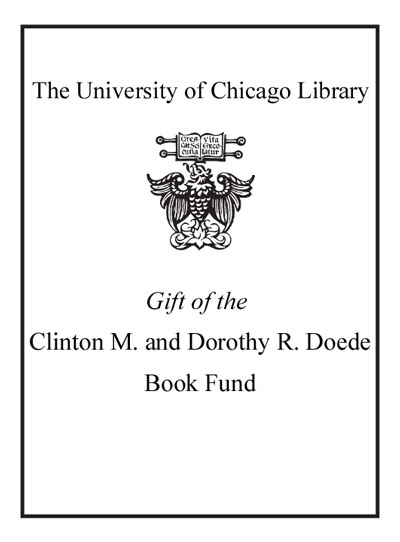Contemporary medical acupuncture : a systems approach /
Saved in:
| Author / Creator: | Jin, Guan-Yuan. |
|---|---|
| Imprint: | Beijing : Higher Education Press ; New York : Distributed by Springer, c2007. |
| Description: | 19, vi, 529 p., [16] p. of plates : col. ill., ports. ; 30 cm. |
| Language: | English |
| Subject: | |
| Format: | E-Resource Print Book |
| URL for this record: | http://pi.lib.uchicago.edu/1001/cat/bib/6689705 |
Table of Contents:
- Pt. 1. Scientific bases of acupuncture. Challenges in advancing classical acupuncture. The current state of acupuncture therapy
- Methods of studying complicated systems
- Modern expression of ancient terminology
- A systemic view of medical acupuncture
- Reflex arcs: basis of acupuncture. Homeostasis and reflex
- Stimulation signals of acupuncture
- Tissue structures and sensory receptors of acupoints
- Afferent pathways of needling sensations
- Stretch reflex and reactions around needles
- Input locations of acupuncture stimulations
- Reflex centers and autonomic efferent paths of acupuncture
- Long reflexes of nerve-humoral regulation
- Therapeutic functions of acupuncture
- Acupuncture anesthesia
- Reflex zones: essence of the meridians. Contemporary studies of the meridian phenomena
- Referred pain and viscera-body surface correlation
- Radiating pain and body surface-body surface correlation
- Revolutionize the meridian theory
- Reflex zone: a substitutable concept for the meridian
- Formation of reflex zones or the meridians
- Classification and distribution rules of reflex zones
- Relationships between reflex zones and the meridians
- Local overlapping and layering of reflex zones
- Relationships between micro and macro reflex zones
- A simplified model of reflex zones or the meridians
- Reflexotherapy: the ascription of acupuncture
- Mechanisms of acupuncture functions. Relative specificity in actions of acupoints
- Mechanisms of regulatory functions of acupuncture
- Mechanisms of acupuncture analgesia
- Mechanisms of acupuncture rehabilitation
- Mechanisms of propagation of needling sensations. Classification of propagation of needling sensations
- Propagation of excitation inside nervous centers
- Activation of peripheral factors
- Hypothesis: propagation of muscle tension waves
- Hypothesis: transmission among sensory nerve endings
- Hypothesis: the retrieval of sensory memory
- pt. 2. Systemic methodology of acupuncture. Black box of the patient
- Gathering reflex information from the body surface. Skin temperature
- Appearance and tension of local soft tissues
- Tender spots
- Electrical resistance of the skin
- Input of intervening information of acupuncture. Optimal stimulation locations
- Types of stimulation - Intensity and duration of stimulation
- Stimulation features of basic needling methods
- Properties and generations of needling sensations
- Separation of effects and needling sensations
- Treatment course and intervals between sessions
- Feedback principle of treatment. The assessment of acupuncture effectiveness
- Time models of the effectiveness
- Indicators of revising treatment plan
- Self-control and instant responses
- Rapidly revising treatment plan
- The flow chart of acupuncture therapy
- Factors influencing effectiveness of acupuncture. The sensitivity of the body surface
- Proper body postures
- Psychological factors
- Mental state of the patient
- The finger strength of the practitioner
- Painless needle-insertion techniques
- The settings of therapeutic environment
- The order of stimulation
- The area of stimulation
- The size of needles
- The angle, depth and direction of needling
- Strategies to raise therapeutic effectiveness. Selection of tender spots
- Multiple needles at a single point
- Single needle through multiple points
- Integrating with electrical stimulation
- Techniques of heat-penetrating moxibustion
- Prolonging stimulation
- Point-associations through multiple passages
- Alter preexisting functional states of the patient
- Miscellaneous needle-manipulation techniques
- Advanced needling techniques. Point-probing and repeatedly needle-thrusting methods
- Needle-manipulations with both hands
- Point-probing with electroacupuncture
- Nerve-stimulation techniques
- Pulsating responses and pulsating points
- Blood vessel stimulation techniques
- Resistance-needling method
- Heat/cool-producing techniques
- Control the propagation of needling sensations
- Pt. 3. Clinical trials and case studies. Disorders of the musculoskeletal system. Frozen shoulder/shoulder pain
- Cervical spondylopathy/chronic neck pain
- Stiff neck/whiplash
- Lumbago
- Hip osteoarthritis/groin pain
- Knee arthritis/knee pain
- Rheumatoid arthritis/arthritis of small joints
- Fibromyalgia
- Tendonitis/heal pain
- Tennis elbow/epicondylitis
- Carpel tunnel syndrome
- Tenosynovitis/trigger finger/ganglion
- Injured soft tissues or spained ankle
- Sciatica
- Disorders of the nervous system. Intercostal neuralgia/chest pain
- Lateral femoral cutaneous neuritis
- Peripheral neuropathy
- Reflex sympathetic dystrophy
- Trigeminal neuralgia
- Bell's palsy
- Facial spasm
- Headache
- Apoplexy/hemiplegia
- Tremor/Parkinson's disease
- Multiple sclerosis
- Alzheimer's disease
- Epilepsy
- Mental disorders. Insomnia
- Neurosis/nervousness/anxiety
- Hysteria
- Depression/schizophrenia/psychiatric disorders
- Disorders of ophthalmology. Myopia/ametropia
- Retinopathy/optic atrophy/glaucoma
- Disorders of otorinolaringology. Tinnitus/neurosensory deafness
- Meniere's disease
- Rhinitis/sinusitis
- Dysphonia
- Dental disorders. Toothache/dental pain
- Dysfunction of temporomandibular joint
- Disorders of circulatory system. Hypertension
- Angina pectoris/coronary artery diseases
- Arrhythmias
- Raynaud's syndrome
- Disorders of respiratory system. Common cold/tonsillitis
- Asthma/bronchitis
- Disorders of digestive system. Nausea/emesis/hiccups
- Gastritis/peptic ulcer/reflux esophagitis
- Ulcerative colitis/irritable bowel syndrome/Crohn's disease
- Cholelithiasis
- Hepatitis
- Disorders of urogenital system. Urinary retention
- Nocturnal enuresis/nocturia/bedwetting
- Urinary incontinence
- Prostatitis/prostate cancer
- Impotence/prospermia
- Dysmenorrhea/endometriosis
- Menopause/hot flush
- Infertility
- Malposition of the fetus
- Hysteromyoma
- Disorders of the skin. Herpes zoster
- Urticaria/pruritus/neurodermatitis/psoriasis
- Acne
- Disorders of endocrine. Obesity
- Diabetes
- Thyroid diseases
- Other disorders. Smoking cessation
- Alcoholism
- Drug addiction
- HIV/AIDS
- Cancers.


